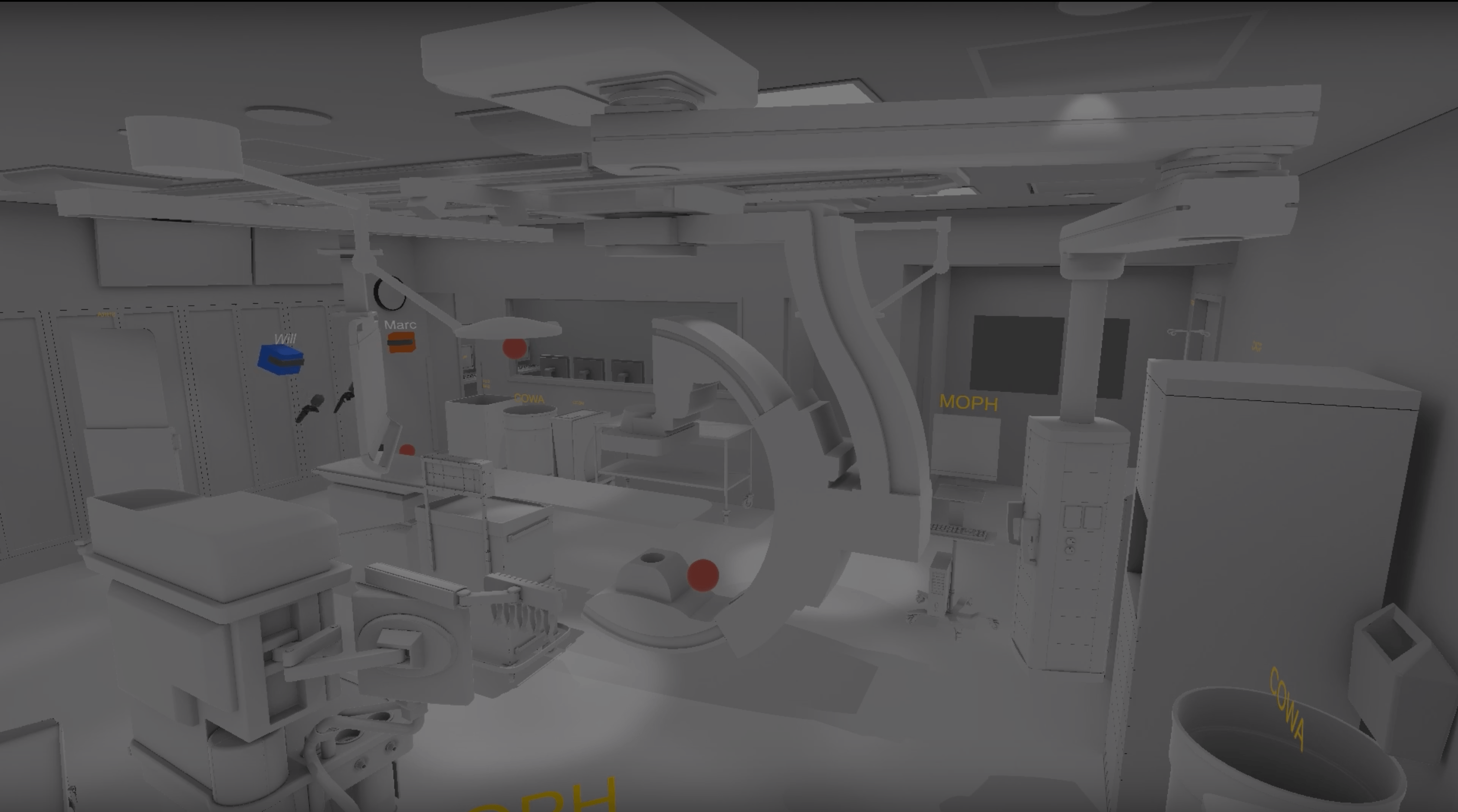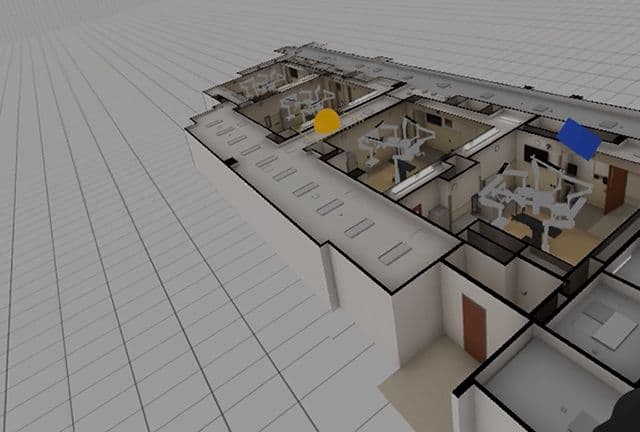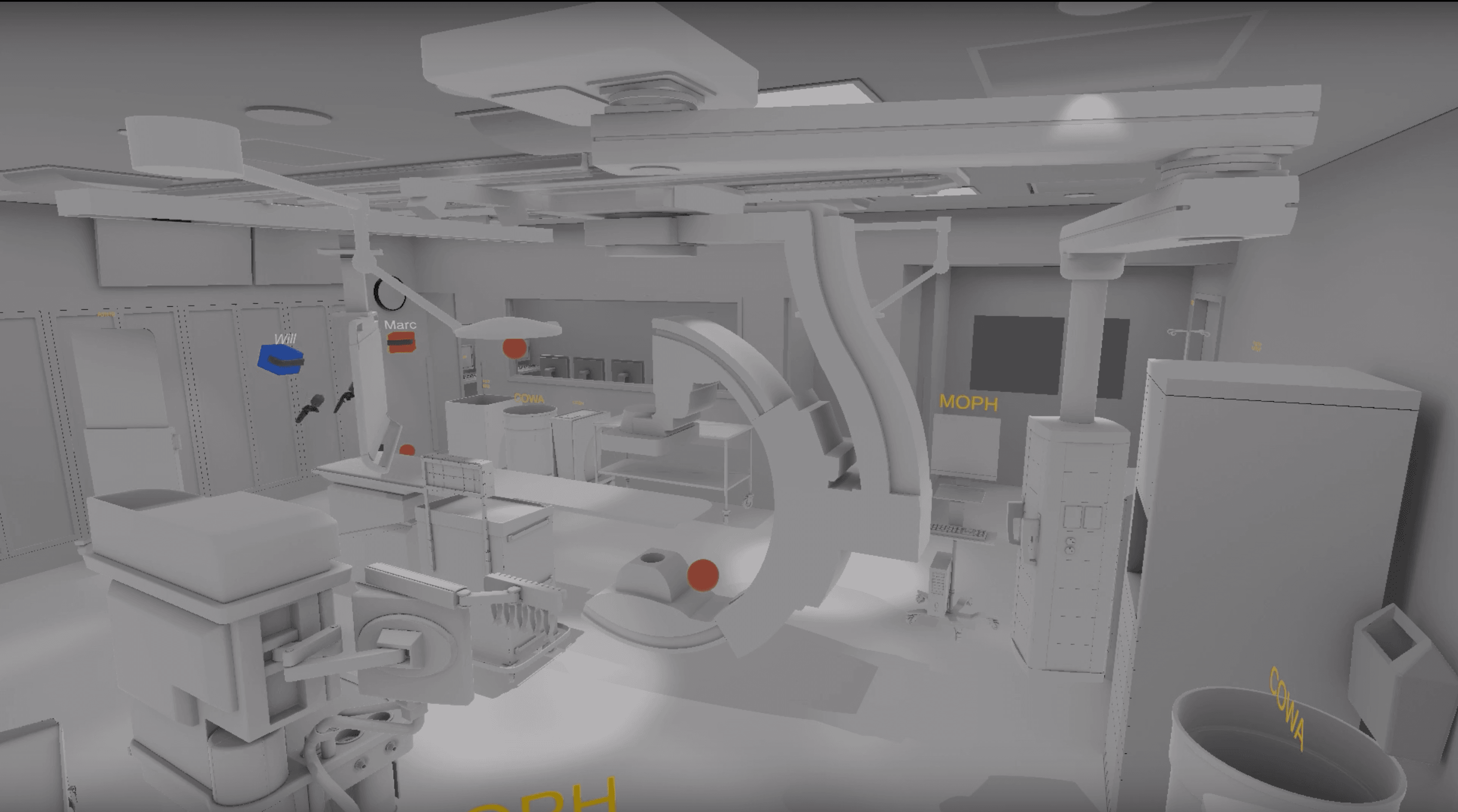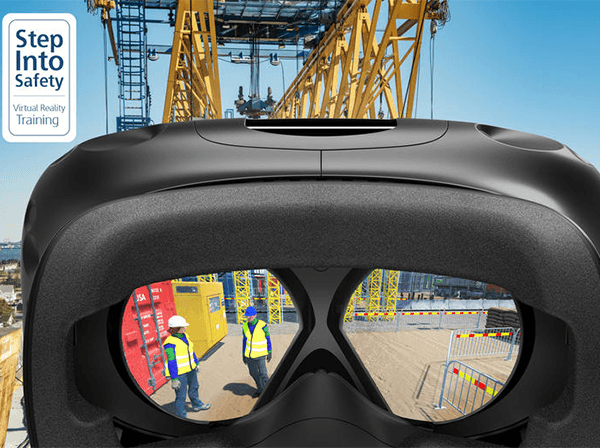
How do you lessen the high costs and immense risks of AEC medical projects? Mortenson has found a way. By perfectly simulating new hospital and operating-room designs in interactive 3D spaces, their clients can fully visualize and interact with their crucial medical instruments, work areas and technologies to ensure optimal layout and ergonomics. This means major benefits like streamlined patient care, more efficient staff, and lower costs.
Interactive VR improves hospital designs for Kaiser Permanente and others
Help clients truly visualize, experience and approve new design projects
VR: HTC Vive, Oculus Rift, Oculus Go, HoloLens, 360 video
4
Seattle and Minneapolis, USA

Minneapolis, MN-based Mortenson is a U.S.-based, top-20 builder, developer and provider of energy and engineering services. The company is privately held with 5,000 employees, $3.8 billion in revenue, and has offices across the U.S. Their expertise is highly sought after for commercial building, green/sustainable construction, virtual design & construction (VDC), construction safety, and much more.
Years ago, Mortenson saw the value of integrating visualization technologies into their design/customer experience offering and created a Virtual Insights team. Since then, they have become experts in using Unity to deliver interactive virtual-reality (VR) and 360 video experiences for a wide variety of client needs such as building-design reviews and sales and marketing initiatives.
Their VR hospital customers include the University of Washington Medical Center and Kaiser Permanente.
The results:
Several years back, Seattle-based Will Adams and Marc Kinsman, Emerging Technologies Developers at Mortenson, saw the value of VR and 360 video for client projects. The first Oculus headset was just out and Adams got in on the ground floor knowing that Unity supported the platform.
“I was working on a design project for the Minnesota Vikings’ stadium. Even though my background is mostly in architecture and design (and some rendering), I was able to convince our project team to explore the idea of simulating the new space with a 3D rendering engine. At the time, I had little experience doing that but I just knew that it would look cool and be easy to output to VR.” Adams’ colleague, Marc Kinsman, was also on board “because Unity has a big supportive community, which meant it would be easy to learn.”
As Adams, Kinsman and colleagues on the Virtual Insights team got up to speed on Unity, their first virtual reality (VR) projects covered the basics of the new 3D space but not much more. “When we started, we were mainly focused on simple virtual projects that clients could walk around in, but over the past few years, we’ve realized how important it is to build interaction into these environments for user engagement.”
When the Virtual Insights team begins a VR project, they use many architecture assets and other resources, which they download from the Asset Store as needed and they also pull in a lot of models from other software such as 3ds Max, SketchUp, and Rhino. Internally, they collaborate a lot, so they are all networked in Unity, which speeds up development and problem-solving, but also means that their customers throughout the U.S. and in Europe can collaborate in real-time in these custom VR spaces.
Due to the wide-ranging client deliverables, the team favors a number of Unity features for their projects, such as the C# API. “We can do pretty much anything we want with the API. It gives us confidence when we’re doing proposals because even if the customer wants something we’ve never done before, we know the API will help us deliver it,” says Adams.
As their projects near the finish line, Kinsman says they like how effortless it is to output to 20-plus platforms. “We’ll jump between Oculus Rift and Oculus Go, the HTC Vive and HoloLens – and we’ve done some stuff for mobile devices too – so using Unity as the base allows us to ‘right fit’ the hardware for the project, and that’s been quite beneficial for us. From the same development platform, we can target whatever’s needed for the project. We don’t have to learn anything new and we can accommodate myriad client hardware and platform requirements.”
When they start a new project, the team typically upgrades to a new Unity version (they’re currently on Unity 2017.3). And as part of their ongoing R&D, they regularly install the latest versions to familiarize themselves with new features they want to try out, such as the Scriptable Render Pipeline (SRP). They’ll be migrating to Unity 2018 soon.

Doing around 20 Unity-based projects a year has given the team a lot of VR and 360 video experience for many top-tier clients, including Kaiser Permanente, the third-largest non-profit hospital organization in the U.S.
“Generally, within the medical arena, clients ask us for help with one major use case: to build a collaborative virtual mockup in 3D space,” says Adams. “Hospital project managers regularly tell us how difficult it is for surgical teams to understand how a procedure room will work for them before it gets built. If the PM can’t get the surgical team to engage and buy in on the project, the hospital inevitably needs to remodel right away because it’s not working for the team.”
For example, Kaiser Permanente was designing a new interventional radiology room and wanted to be sure that it would function smoothly for their medical team. Mortenson built the entire room virtually, according to specifications, so that everyone on the team could enter the space and interact with it in order to help finalize the design of a room they’ll be collaborating in for years. To that end, all the specified equipment was faithfully represented in 3D so the surgical team could reach out and manipulate the light booms, tables, and everything else that they typically interact with. Watch the Kaiser radiology room video to see it in action.
On another project, when Mortenson customers are designing or building a new treatment center or operating room, the client stakeholders – including project managers, doctors, nurses and technical personnel – typically want to interact with the different elements and make decisions about room dimensions, ergonomics, aesthetics, functional systems, and workflow efficiency very early in the project. “It gives them a great opportunity to spot, discuss and correct any problems,” says Kinsman. Watch how Mortenson created a collaborative work environment for the hospital wing of the University of Washington Medical Center.
In terms of design review projects for healthcare clients, Mortenson’s Virtual Insights team has delivered substantial value. Courtesy of their interactive VR pieces, clients have enjoyed huge savings and avoided major flaws and frustrations before any concrete was poured, walls built or materials ordered, and all without having to spend time and money on a physical mockup.
For example, Bob Dillon, Capital Projects Manager at University of Washington Medical Center, stated, “It’s always there – you can go back to it and review what your decision was or review how a change might impact the rest of the project.” And Kinsman adds, “Our clients always prefer the virtual reality mockup over a physical mockup because it’s so cost-effective and informative.”
Mortenson saw much success with Kaiser as well. “With the interactive, immersive VR experience we built with Unity, the project team was able to identify deficiencies in the design, ensure the most productive and efficient workflows, and get important buy-in from the medical professionals. And importantly, this allowed Kaiser to stay on budget and schedule without the expense and lead time associated with physical mockups,” concludes Adams.
Finally, it’s not surprising that due to Unity’s flexibility, wide platform support, and extensive ecosystem – such as the supportive community and Asset Store – it has quickly become Mortenson’s go-to platform for bringing great value and important design-validation processes to their clients in the medical industry.


Collaborating with Sweden-based Skanska, the fifth-largest construction company in the world, creative VR and AR agency OutHere developed highly realistic virtual-reality scenarios for Skanska’s employee safety-training program.

Mortenson, one of the largest construction companies in the U.S., provided their customers with the ability to build, iterate, and review designs in interactive 3D spaces. Learn how they empowered teams and saved them significant costs.